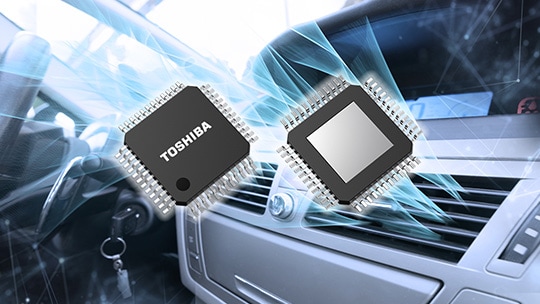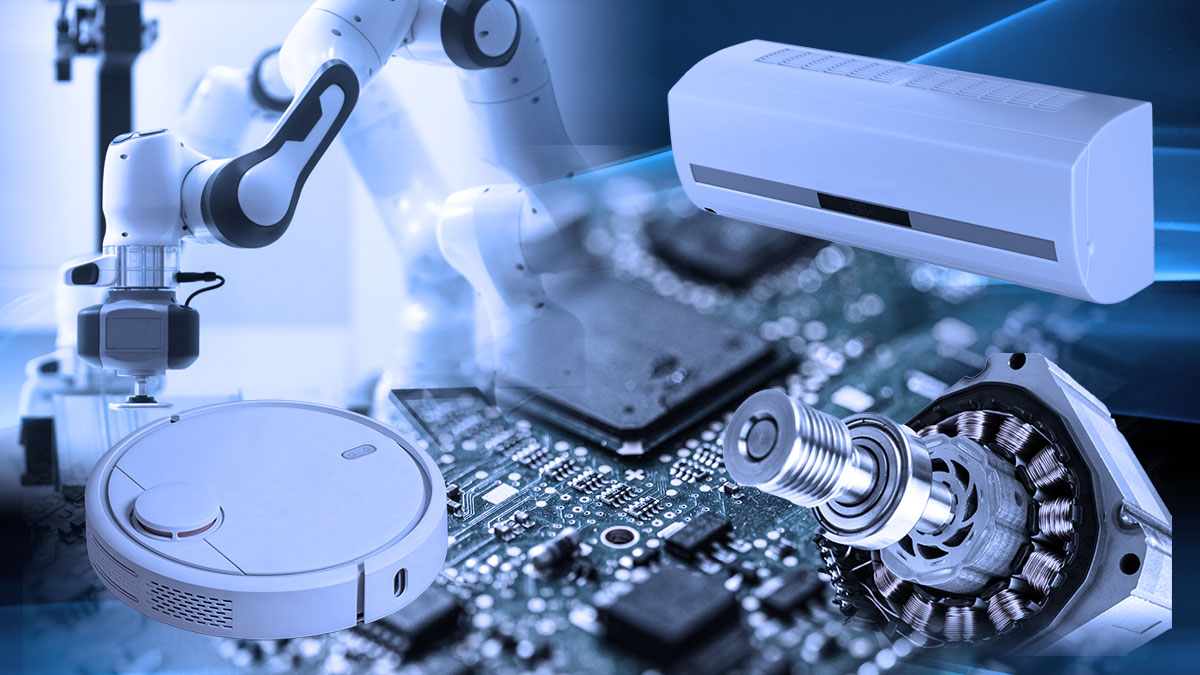- General Top
- SEMICONDUCTOR
- STORAGE
- COMPANY
-
My ToshibaSemicon
- Semiconductor Top
-
ApplicationsAutomotive
Body Electronics
xEV
In-Vehicle Infotainment
Advanced Driver-Assistance Systems (ADAS)
Chassis
IndustrialInfrastructure
BEMS/HEMS
Factory Automation
Commercial Equipment
Consumer/PersonalIoT Equipment
Healthcare
Wearable Device
Mobile
Computer Peripherals
-
ProductsAutomotive Devices
Discrete Semiconductor
Diodes
Transistors
Logic ICs
Analog Devices
Digital Devices
Wireless Devices
※
: Products list (parametric search)
Power SemiconductorsSiC Power Devices
※
: Products list (parametric search)
Isolators/Solid State RelaysPhotocouplers
Digital Isolators
Solid State Relays
Fiber Optic Transmitting Modules
※
: Products list (parametric search)
MOSFETsIGBTs/IEGTsBipolar Transistors※
: Products list (parametric search)
Diodes※
: Products list (parametric search)
MicrocontrollersMotor Driver ICsIntelligent Power ICs※
: Products list (parametric search)
Power Management ICsLinear ICs※
: Products list (parametric search)
General Purpose Logic ICsLinear Image SensorsOther Product ICsOther Product ICs
※
: Products list (parametric search)
-
Design & Development
Design & Development
Innovation Centre
At the Toshiba Innovation Centre we constantly strive to inspire you with our technologies and solutions. Discover how to place us at the heart of your innovations.
-
Knowledge
Knowledge
Highlighted Topics
Further Materials
Other
- Where To Buy
- Part Number & Keyword Search
- Cross Reference Search
- Parametric Search
- Stock Check & Purchase
This webpage doesn't work with Internet Explorer. Please use the latest version of Google Chrome, Microsoft Edge, Mozilla Firefox or Safari.
require 3 characters or more. Search for multiple part numbers fromhere.
The information presented in this cross reference is based on TOSHIBA's selection criteria and should be treated as a suggestion only. Please carefully review the latest versions of all relevant information on the TOSHIBA products, including without limitation data sheets and validate all operating parameters of the TOSHIBA products to ensure that the suggested TOSHIBA products are truly compatible with your design and application.Please note that this cross reference is based on TOSHIBA's estimate of compatibility with other manufacturers' products, based on other manufacturers' published data, at the time the data was collected.TOSHIBA is not responsible for any incorrect or incomplete information. Information is subject to change at any time without notice.
require 3 characters or more.
Is it okay to make deliberate use of body diodes of MOSFETs?
Yes, body diodes can be deliberately used.
Diodes will be formed between drain and source, due to the structure of the MOSFETs. This is called body diodes or parasitic diodes. The N-channel MOSFET cross-section (Fig. 1.1) and equivalent circuit (Fig. 1.2) is as shown below. (Body diode is shown in red.)
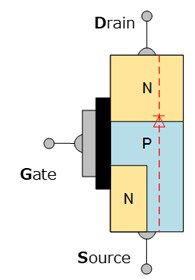
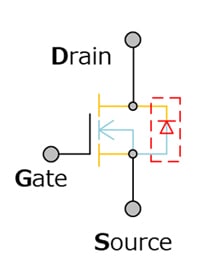
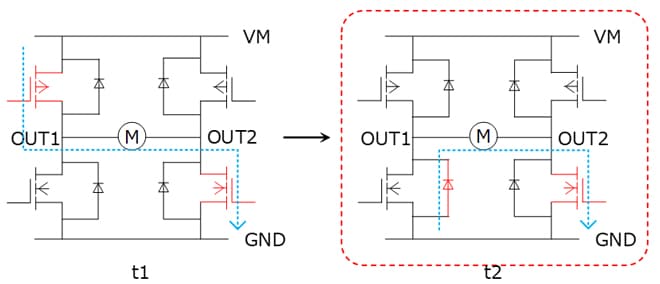
The body diode can be used to recirculate the motor current when operating the motor. For example, the high side MOSFET of OUT1 will be turned ON (t1) and OFF (t2) during asynchronous PWM control as shown in Fig. 2. During OFF (t2) period, the recirculating current will flow through the body diode of low side MOSFET of OUT1.
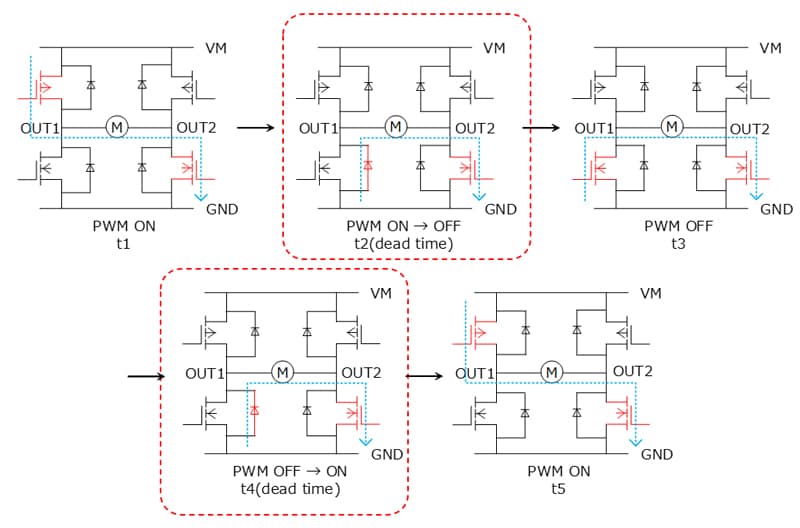
Note that during synchronous PWM control, the low side MOSFET will turn ON during recirculation as shown in Fig. 3, t3. Generally, using MOSFET instead of body diode for recirculation is more efficient and can reduce heat generation.
Also, dead time (t2, t4) is implemented to avoid shoot-through current during synchronous PWM control, in which body diodes will be used for recirculation.
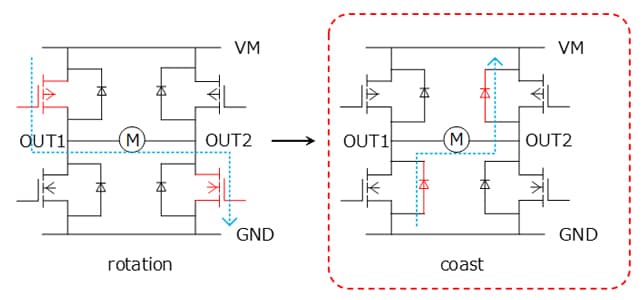
In most cases when setting the motor from rotation state to coast, all MOSFETs will be turned OFF. During which, the body diodes will be used to recirculate the motor current as shown in Fig. 4.
Related Links
The following documents also contain related information.


